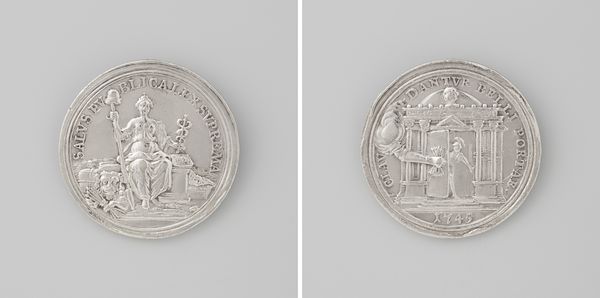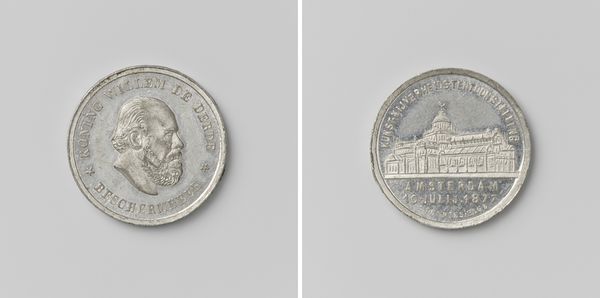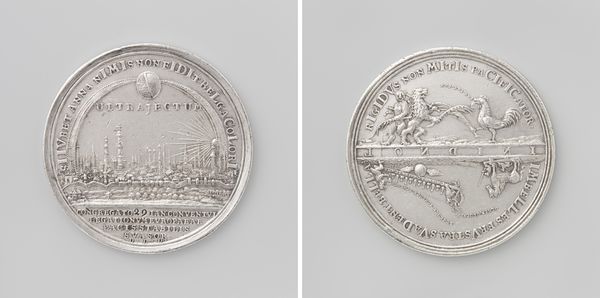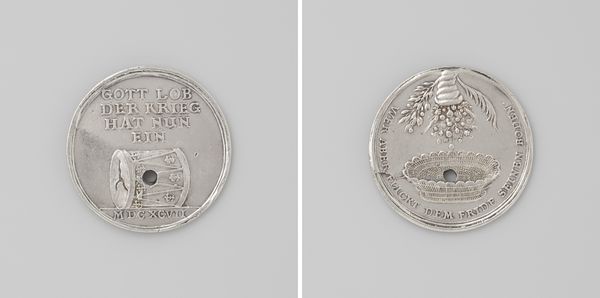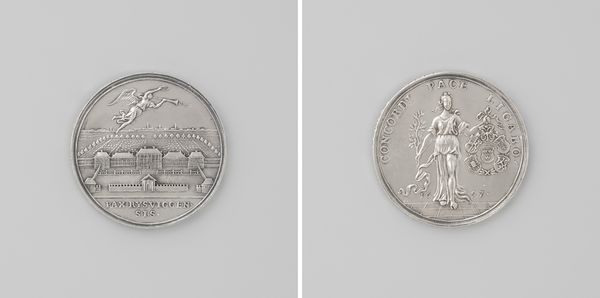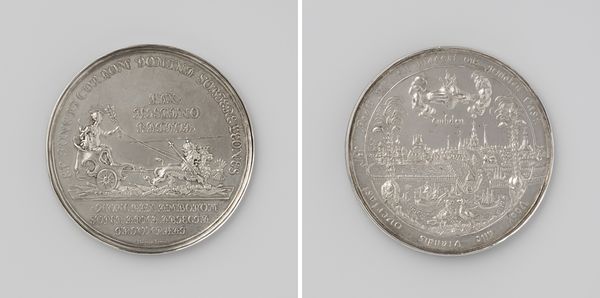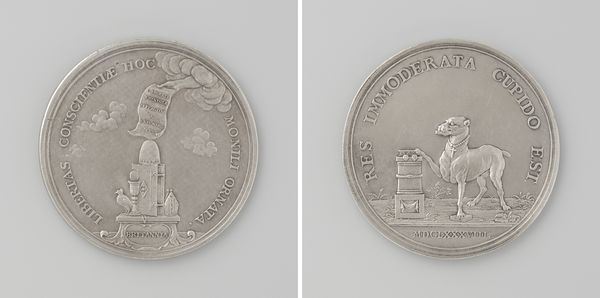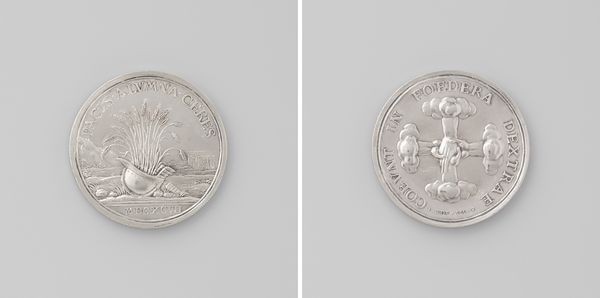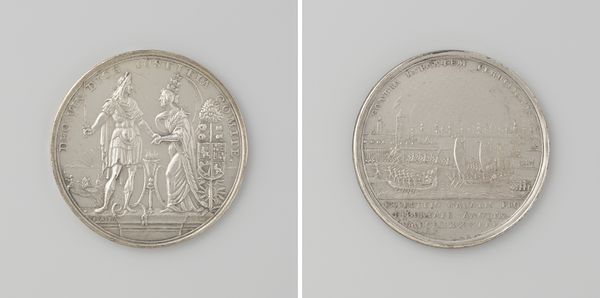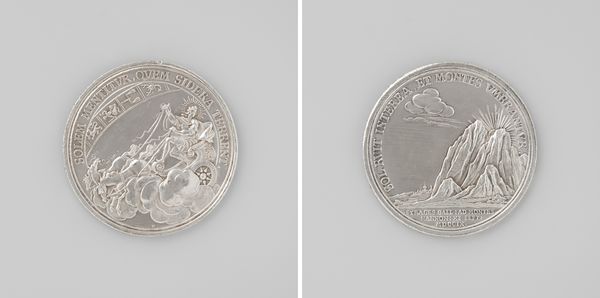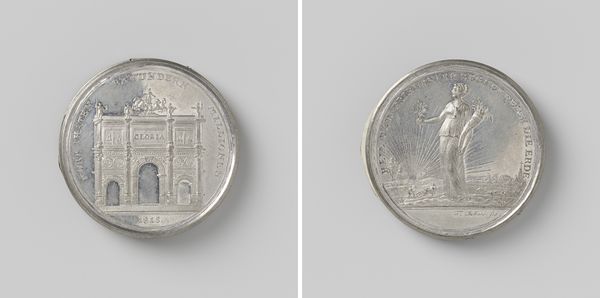
Stichting van het oude mannen- en vrouwenhuis van de diaconie van de Nederduitsch Hervormde gemeente te Leeuwarden 1758
0:00
0:00
print, metal, engraving
#
baroque
# print
#
metal
#
engraving
Dimensions: diameter 3.9 cm, weight 276 gr
Copyright: Rijks Museum: Open Domain
Curator: So, here we have an engraving on metal from 1758. The rather long-winded title is "Stichting van het oude mannen- en vrouwenhuis van de diaconie van de Nederduitsch Hervormde gemeente te Leeuwarden"... which translates to "Foundation of the old men's and women's house of the diaconia of the Dutch Reformed Church in Leeuwarden." Quite a mouthful! Editor: Oh my, my first thought is how…icy it looks. Cold and clean. Like a polished coin fresh from the mint, or maybe a commemorative token of a forgotten age. What is this? Some sort of historical medal? Curator: Spot on. It's Baroque in style and depicts, on one side, the almshouse it commemorates, and on the other, a complex heraldic scene. Editor: Ah, the house… plain, solid, imposing even. Reminds me that care for the elderly has always been, to some extent, about institutionalizing them... imposing order, perhaps? Then that crest on the reverse—the obligatory lion and what is that, an eagle?— feels so symbolic of power and who controls it. Curator: It’s certainly packed with symbolism. The text on the almshouse side says, "What is worthier than God," suggesting perhaps the charitable act itself. The flip side is, of course, equally symbolic in tone, full of assertive language that praises what good is large, which almost ironically juxtaposes against the fact that those at the end of their life need small gentle moments to live them well. Editor: It makes you wonder about the lives lived within those walls. Who were these "old men and women," and what stories did they carry? Were they grateful for this structured "care," or did they feel their identities eroded by the very act of institutionalization? I keep circling back to those power structures… like, who funded it? Who benefitted? I would argue the engraving might be designed to communicate how merciful the institution is for existing. Curator: These kinds of engravings often served multiple purposes: commemoration, record-keeping, even propaganda, as you hint at. It’s interesting to consider it less as a simple depiction of an event and more as an active participant in the social and political landscape of its time. Editor: Exactly. So, in looking at it like that, beyond its Baroque charm, this seemingly simple piece whispers stories about societal structures, gender, class, and the often-fraught relationship between care and control.
Comments
No comments
Be the first to comment and join the conversation on the ultimate creative platform.
